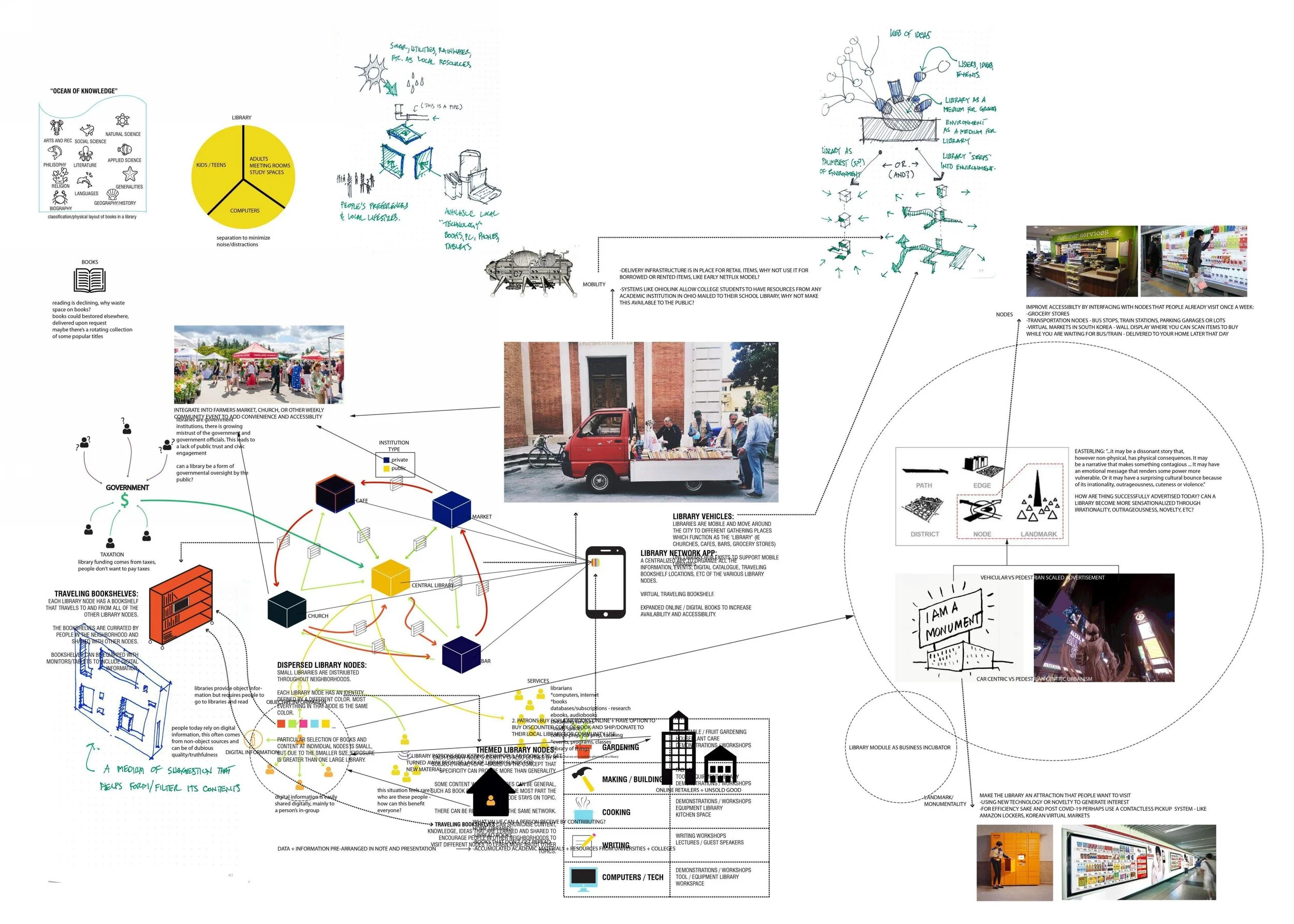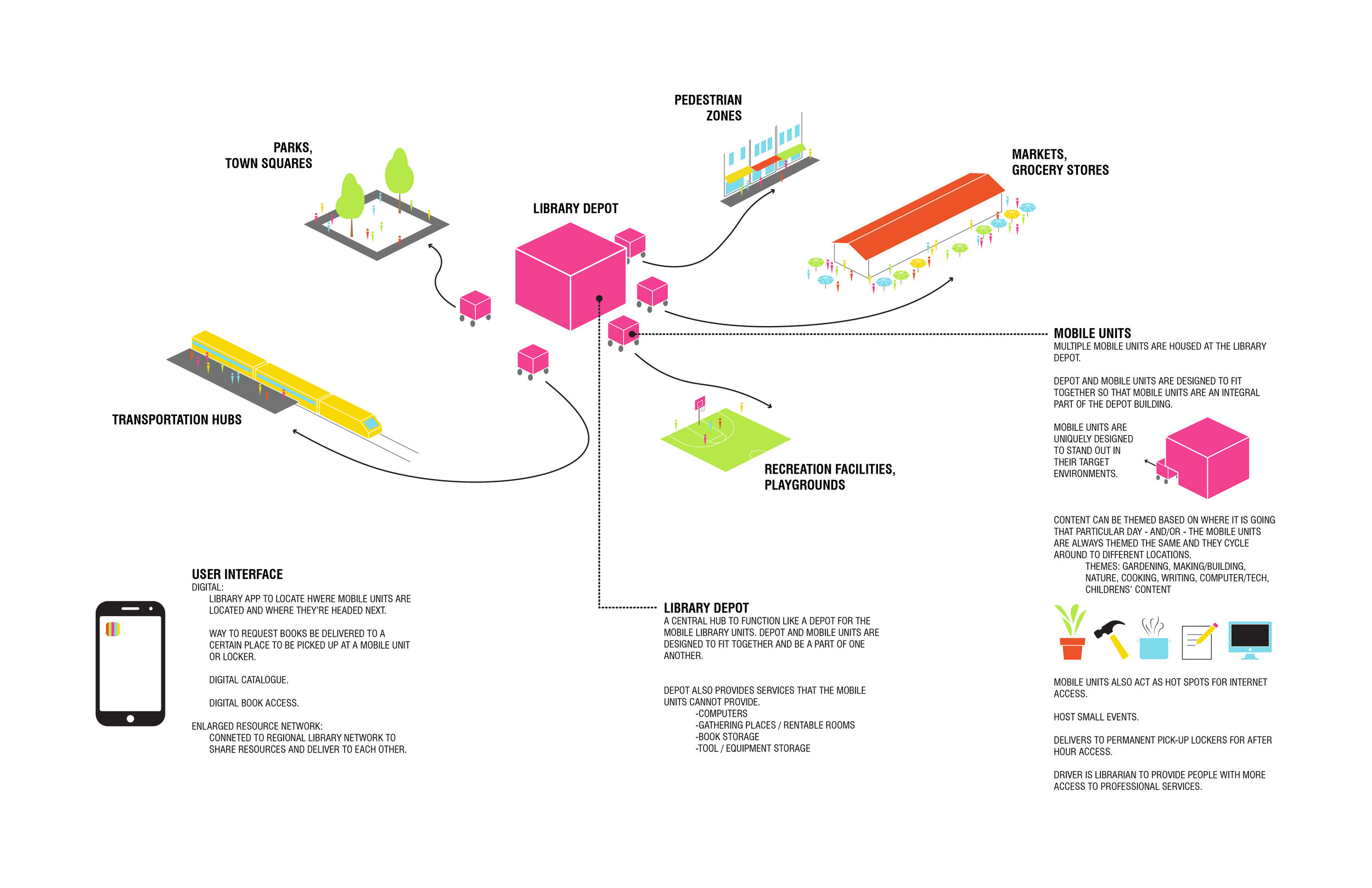Design Collaboration From Home
How do you maintain a creative and collaborative culture while everyone works remotely?
In the office, we had the ability to easily create and collaborate on projects. Since March, we’ve been spread across Northeast Ohio, working in our respective homes. So we’ve had to come up with new ways of collaborating and communicating that are conducive to remote work.
One of our favorite ways of collaborating from a distance has been creating an exquisite corpse. For anyone unfamiliar, an exquisite corpse is a method of creating that involves a chain of people adding to a design or composition sequentially, each person only being allowed to view what the previous person contributed.
Over the course of a day, we each spent an hour or two with the prompt and a diagram/sketch from the designer before us. We each came up with our own responses and passed them along to the next person. It was almost like a game of telephone, the original design intent becoming more and more distorted as the message gets passed along.
Everyone’s exquisite corpse contributions overlaid into one image. Hey, no one said design always looks pretty!
It was exciting to compile everyone’s designs and see how the prompt was interpreted differently by each person. Collaboration strengthens design because everyone thinks differently, and having a visual representation of everyone’s distinct perspective and style allows us to understand each other better as designers.
After compiling individual diagrams, we organized our thoughts to make a cohesive (and pretty) diagram. The final product uses ideas from each diagram, every individual’s ideas strengthening the design.
Refined diagram of exquisite corpse design. Compiled and designed by Nathan Echstenkamper.
We enjoyed being able to collaborate with each other while can’t in person, but this style of collaboration has its perks even in an office setting. It doesn’t require everyone to be able to meet at the same time - contributing to an exquisite corpse can be done over the span of days and people can partake on their own schedule. For particularly small or busy firms, collaborating on your own schedule can be extremely valuable. Another pro is that there’s a guarantee that everyone’s perspective will be heard (or seen) and that each person will have the time to fully develop and communicate their ideas the way they believe to be most effective. Sometimes it can be difficult to focus on and convey your own ideas in meetings, especially if you’re surrounded by other intelligent and outspoken creatives.
The dispersed architecture office
It seems like every project in the office has some form of delay, major issue, or an “oh #@!?!” moment. That said, the current covid 19 situation is a new one.
For now, I’m going to set aside the much more important health, safety, and financial impacts of covid 19 and burrow down into thoughts on the specific impacts to an architecture office
“It’s Good This Didn’t Happen 20 Years Ago…”
When I was first interning at an architecture office, AutoCad R14 was THE pinnacle of software (please note this was seventeen years before “AutoCad 2014”) . 3d modeling was a novelty that someone did in their spare time to show off the cool flower vases they could render. And the paper. Oh the paper. There were drawing sets, presentation boards, product catalogs, code books, zoning books, project binders, standard details, material libraries, and on and on. We are far from having paperless offices, but sending everyone to work remotely makes me realize that this would have been virtually impossible a couple of decades ago.
Between email, digital calendars, online project management software, and storing data in the cloud it is possible with (relatively) short notice to have everyone work 30 miles apart from each other. There have been snags, server issues, and a general gnashing of teeth. What there hasn’t been is a complete disruption of service, which is in itself kind of amazing.
“It’s not the same…”
Of course not. It’s been exactly one day of having the office split apart, and it feels different. To find out what your colleagues are up to, you have to send them a chat or an email instead of just popping your head up and shouting across the room. Granted, the chats and emails happened when we were all together in the same place, but we at least had the option of shouting.
I’d like to think we’ll find a balance of interaction and collaboration, but there might be no substitute for being in a room with someone to brainstorm, draw, and share ideas.
“It’s better…”
I’m not sure about this one. I’ve only worked in open offices where everyone interacted with everyone else, for better or worse. Being split up forces better project management and goal-setting. It makes everyone set tasks and deadlines rather than fussing around on different things (although I’m of the opinion that some great things come from fussing around).
Working from home also lets people manage themselves. It might get old (give it a few weeks), but the ability to sleep in an extra hour rather than commute to the office. is a nice perk. There are also environmental considerations—fewer drivers = fewer cars = fewer emissions. On the scale we are seeing now, it might have some impact if we turn it into a habit moving forward.
“I don’t like being reliant on software…”
This one is inevitable. To link everyone together requires software: slack, google drive, remote desktop, goto meeting, zoom, jira, confluence. The list is long. If the software doesn’t work, then you’re dead in the water.
It is trite, but it is true “paper can’t crash on you.”
“The dog ate my homework…”
For every project, builders have used a slew of different excuses as to why schedules are delayed, products are unavailable, or things in general aren’t getting done. I’ve heard “…it’s the hurricane…it’s NAFTA…it’s because of the drought.” Pick the crisis of the day.
It’s tough to argue with “It’s the global pandemic.” That one feels real.
Wash your hands and stay home.
That’s it for now. Sorry for a lack of images. Pictures always make things better.


